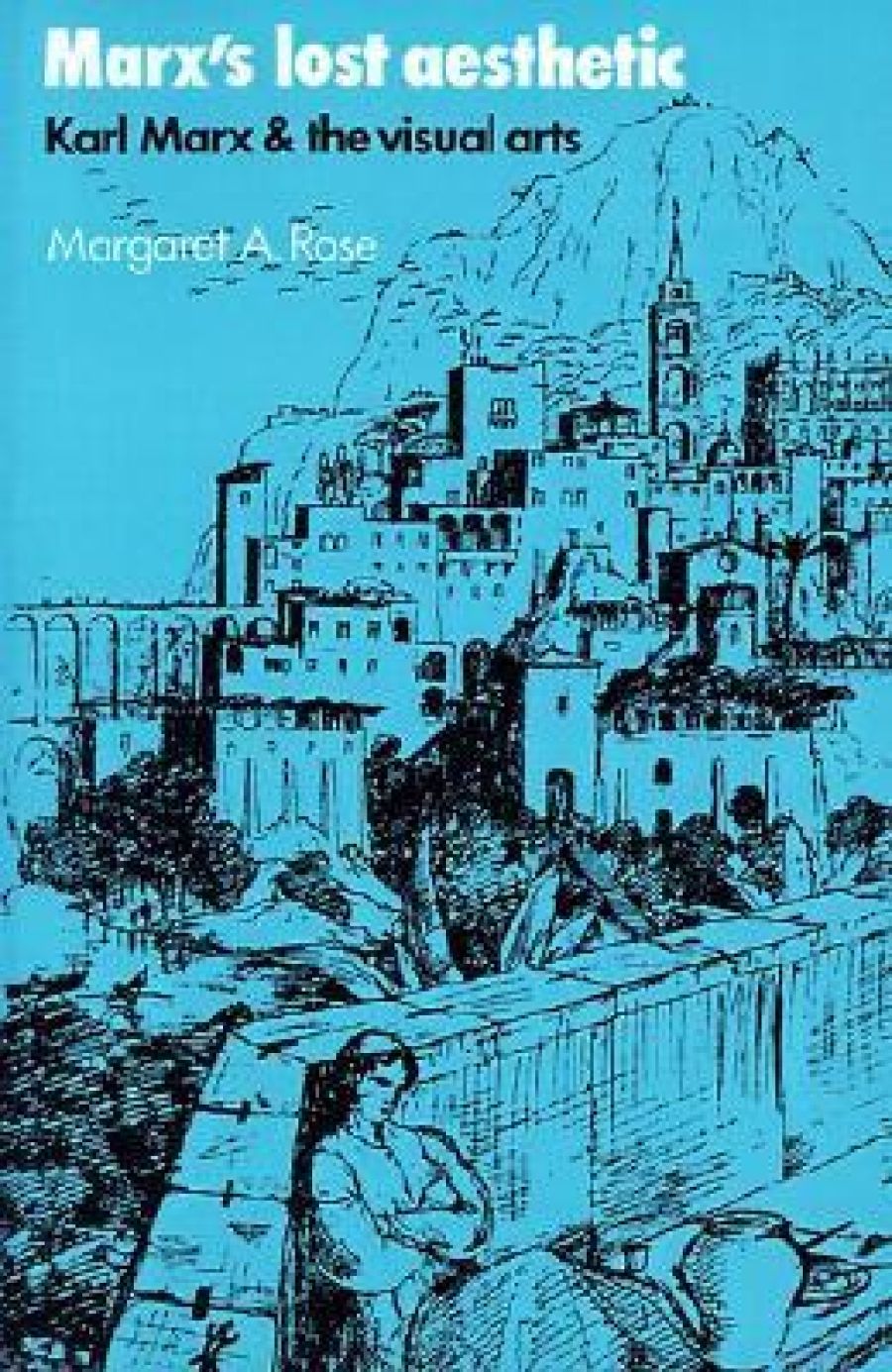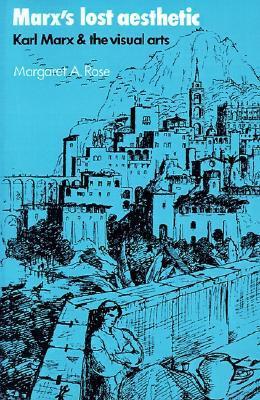
- Free Article: No
- Contents Category: Politics
- Review Article: Yes
- Article Title: Lost Aesthetic: And did Marx have one?
- Online Only: No
- Custom Highlight Text:
The title Marx’s Lost Aesthetic makes two claims - that Marx had an aesthetic, and that it was lost. Here is the stuff of a good narrative here: What was Marx’s aesthetic? How did he come to have it? Why, when and how was it lost? This in the story Margaret Rose sets out to tell from the perspective indicated in the subtitle, Marx’s relation to the visual arts.
- Book 1 Title: Marx’s Lost Aesthetic: Karl Marx & the visual arts
- Book 1 Biblio: Cambridge University Press, 216p, biblio., index $49.5
- Book 1 Cover Small (400 x 600):

- Book 1 Cover (800 x 1200):

For Marx, the story continues, artistic activity is an instance of human labour. As such it is part of social production, and so subject to technological, social and cultural forces. Under capitalism, therefore, artistic labour and its products are also subject to being alienated by being valued simply as a commodity. However, if not alienated by the sense of having, art has the important function of returning the self to its sensual, material being. It does so, first, by satisfying the physical senses, and, second, when we ‘reproduce its truth on a higher level’ (Marx), by showing us how life has been or is now made possible and shaped by material conditions and cultural ideologies. Thus, like Saint-Simon, Marx suggests that the artist has a place in the revolutionary avant-garde. For she or he labours productively, can model the ideal of unalienated labour and can instruct us as to our lived relation to society, history and nature.
This productivist aesthetic is the one Rose believes was lost in the struggle between the Constructivists and Social Realists in post-revolutionary Russia. The third part of her story recounts this struggle. The Constructivists wanted to develop a new kind of art, one allied to technology, inclusive of new and popular: media (e.g., film and poster arts), and productive of good designs for practical use in the new society.
Against this revival of Marx’s productivist aesthetic, the Social Realists adopted the (somewhat neoclassical) position that art is essentially a reflection of reality but that politically committed art reflects the ideal reality of a worker’s state. At the first Congress of the Writers’ Union in 1934 the Social Realists won, and through decades of subsequent state censorship Marx’s aesthetic was lost.
The story Rose tells is an interesting one and, in these days of fierce theorising in literary and cultural studies, timely as well. There are, though, some problems with her account. Some are aesthetic. She might, for example, have added some narrative tension had she begun with the struggle between Constructivists and Social Realists, and then moved backwards to the source of the Constructivists’ position in Marx’s writings. As it is, the place of the (intrinsically interesting) account of the Nazareens in the book’s argument (or plot) only becomes fully apparent at the end when the story of the struggle is told. And most certainly narrative tension would have been improved had the temptation to sentences of some 60 or 70 words in length been more frequently resisted.
A more significant problem, however, lies in the implicit claims that Marx had an aesthetic that was lost. Stefan Morawski (in Marx and Engels, 1974) has gathered Marx’s scattered writings on aesthetics under the headings ‘themes’, ‘observations’ and ‘remarks’, suggesting thereby that Marx had opinions on art rather than a theory of it. It was left to later writers to develop his writings into a coherent theory. Not surprisingly some (e.g., Engels, Plekhanov, Lukacs) found there warrant for a reflectionist aesthetic and others (e.g., Mayakovsky, Brecht, Althusser/Macherey) found authority for versions of a productivist theory.
Rose argues forcefully that studies of Marx’s views of art generally have been ahistorical, regardless of Marx’s relation to the visual arts, inattentive to the evidence of the early ‘Hegelian’ writings, and too focussed on the twentieth-century literary debate between proponents of modernism and social realism. However, by adopting a somewhat rigidly historical methodology, focussing wholly on the visual arts (actually mostly on painting), emphasizing the early writings and ignoring the literary debate, Rose robs her study of some of its relevance. The long debate figured in the oppositions between Plekhanov vs Mayakovsky, Lukacs vs Brecht and Goldman·vs Althusser, et al. suggests both that Marx did not give us anaesthetic and that the productivist theory of art was never quite lost.
And ‘in the last instance’ there is an economic problem with Marx’s lost aesthetic. Its costliness no doubt relates to inflation and to several black-and-white reproductions of paintings (often helpful, but sometimes too obscure to illustrate discussion of details). Still, at $49.50 the book is probably beyond the means of the academic labourer.


Comments powered by CComment